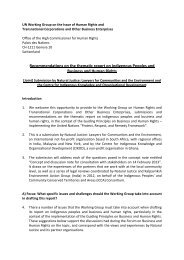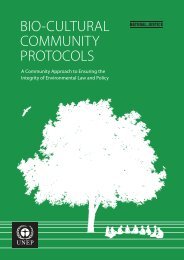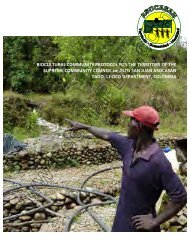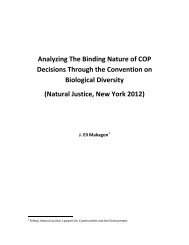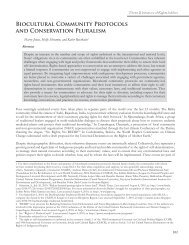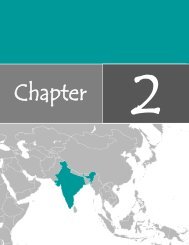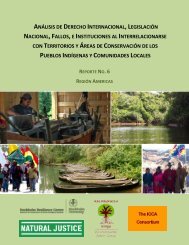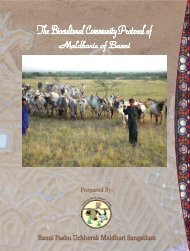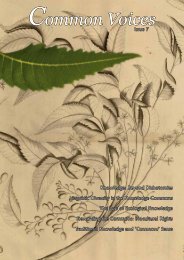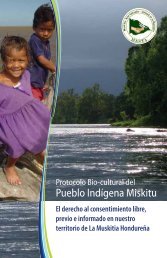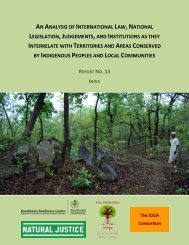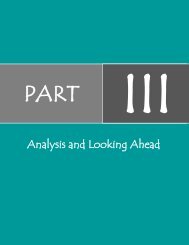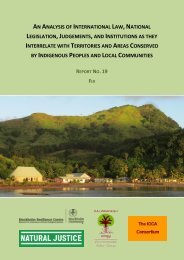English - Natural Justice
English - Natural Justice
English - Natural Justice
You also want an ePaper? Increase the reach of your titles
YUMPU automatically turns print PDFs into web optimized ePapers that Google loves.
1. THREATS TO ICCAsThere are three major categories of external of threats to ICCAs and to the Indigenouspeoples and local communities who control these areas. The first consists of systemicpressures on the environment and biodiversity worldwide, including habitat loss,overexploitation of resources, pollution, invasive species, and climate change (as identifiedin Global Biodiversity Outlook 3). In general, these are driven either by the predominantmarket- or state-dominated economies’ unsustainable patterns of resource extraction,production and consumption. The mainstream economic and governmental systems alsopromote rapid urbanization, loss of traditional languages and knowledge systems,dependence on imported and mass-produced foods and material goods, accumulation ofcapital, and elite capture, often also building on or exacerbating traditional inequities ofclass, caste, ethnicity, and gender. Due to the inextricable links between Indigenous peoplesand local communities and the territories and resources upon which they depend, the lossof biological diversity is fueling the loss of cultural and linguistic diversity and intergenerationaltransmission of knowledge and practices. This in turn undermines social andcultural cohesion and sophisticated customary systems of caring for territories andresources.The second category consists of the direct pressures on Indigenous peoples and localcommunities and their territories and resources. This includes, on the one hand, threatsfrom industrial methods of extraction, production and development (for example, landconversion for large-scale livestock farms or monoculture plantations, infrastructure anddams, industrial fishing and logging, and large-scale mines) and, on the other hand, threatsfrom exclusionary environmental and conservation frameworks that undermine the rightsand livelihoods of Indigenous peoples and local communities.The third category of threats – the focus of this synthesis report – has the potential toexacerbate the first two categories. The research highlights the widespread lack of effectivelegal recognition of a range of Indigenous peoples’ and local communities’ inherent rights,including to self-determination and self-governance, customary laws and traditionalinstitutions, and customary rights to their territories, lands, waters, natural resources, andknowledge systems. They suffer continued marginalization from legislative and judicialsystems and decision-making processes at all levels, impacts of discriminatory andfragmented legal and institutional frameworks, and exclusion from (or negative impacts of)governmental and corporate programmes of so-called development, conservation, andwelfare. This is compounded by a corresponding lack of non-legal recognition of the aboverights. Even civil society programmes can have inadvertent negative impacts on Indigenouspeoples and local communities and their ICCAs. These factors actively undermine Indigenouspeoples’ and local communities’ abilities to respond to the first two categories of externalthreats. In this context, it is vital to ensure appropriate and adequate recognition ofIndigenous peoples’ and local communities’ rights to maintain the integrity of their ICCAs.



